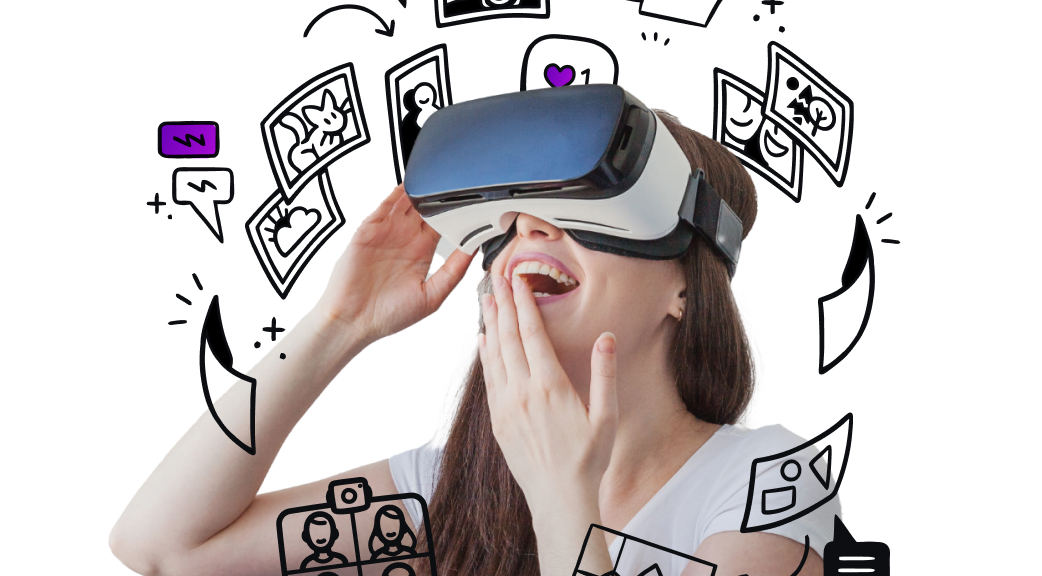When Apple® launches a new product, headlines abound – and its new Vision Pro™ headset is no exception. From general praise as the next big thing in mixed reality to warnings not to wear the headset while driving (or crossing the street), it’s safe to say the launch has renewed public interest in VR/AR technology (or “spatial computing,” if you’re fancy).
Starting at $3,500, the Vision Pro™ isn’t for everybody – but its considerable buzz reflects consumers’ growing appetite for mixed reality devices. In fact, data from Asurion’s 2024 Tech Lifestyle Report suggests that 1 in 4 U.S. adults will own a VR/AR device in the next 12 months.
The rise in mixed reality headsets is yet another indication of the “connected home” revolution. Smart home technology is moving along the tech adoption curve. No longer are these devices just in the hands of the early adopters and tech savvy. We are seeing tech move into the tech acceptance phase and into the homes of everyday people.
While devices like these continue to change how we experience life at home, they also create new opportunities for businesses to reach, engage and serve homeowners. In other words, those who support the devices that run the home can become just as essential as the tech itself. If your business already provides homeowners insurance, for instance, why not become even more integrated in the customer’s home with a protection and support program for connected devices that glitch and break every day?
VR/AR headset adoption is a microcosm of the broader business opportunity – read on to find out how.
Who’s buying?
As you’d expect, VR/AR devices are most popular among younger generations: Headset ownership rates are almost three times higher among Gen Zers (23%) and Millennials (25%) than Boomers (9%).
And, rather tellingly, the number of Gen Zers who are planning to replace their VR/AR headset in the next 12 months is about the same as the number of Gen Zers planning to upgrade their smartphone.
These devices also tend to attract:
- People with higher incomes
- People who consider themselves tech savvy
- People with children
While cost is a barrier to adoption for 1 in 4 potential consumers, VR/AR headsets make people feel far “cooler” and “trendier” than any of the other 20 devices covered in Asurion’s Tech Lifestyle Report.
Although both Gen Zers and Millennials appear equally vested in VR/AR technology, Millennials are currently far more likely to be the primary tech decision maker for their household (70% take on this role) than members of Gen Z (only 49% make the tech decisions).
What are the implications?
Assuming this market continues to expand – and we’re confident it will – VR/AR headsets represent great opportunities for companies to come up with new and better ways of engaging with tech’s youngest, most enthusiastic consumers.
As device ownership in this category grows, so too does the need for tech help, from initial setup to connectivity glitches – even breakage. After all, the risk of new technology, beyond the hefty price tag, is its unknown durability. Those two factors alone make buying a protection plan a no-brainer. But what if that protection plan covered not only that pricey new headset, but all of the customer’s connected devices? (The average household has 17 of them.) And what if that plan included live tech help for any questions or issues with any of those covered devices? Now that starts to feel like a meaningful consumer benefit – much more so than a single warranty for a single product.
Becoming a resource to consumers for nearly every device in their home is an opportunity not just for tech manufacturers, but for any company looking to become more deeply entrenched in their customers’ home lives. Asurion partners with businesses to launch and scale successful connected home programs that help drive positive customer engagements which in turn foster customer loyalty and power future growth. VR/AR headsets might be the next frontier in how people experience the world around them, but Asurion’s connected home programs are the future of how people experience device protection and support – and how businesses meet customers where they are, to help with things they rely on to entertain, organize and protect their households.
